Unit 6: Africa, 1100–1980 CE
0.0(0)
0.0(0)
Card Sorting
1/31
Earn XP
Description and Tags
Art History
AP Art History
Unit 6: Africa, 1100–1980 CE
Africa
African Art
Great-Zimbabwe
Bamileke
Benin
Luba
African-Architecture
Great-Mosque-of-Djenné
Benin-Wall-Plaque
Golden-Stool-of-Ashanti-(Sika-Dwa-Kofi)
Ndop-(portrait-figure)-of-King-Mishe-miShyaang-maMbul
Power-figure-(Nkisi-n’kondi)
Portrait-mask-(Mblo)-of-Moya-Yanso
Female-(Pwo)-mask
Mende-Bundu-mask
Mende-Bundu-mask
Lukasa-(memory-board)
Aka-elephant-mask
Reliquary-figure-(byeri)
Veranda-post-of-enthroned-king-and-senior-wife-(Opo-Ogoga)
University/Undergrad
Study Analytics
Name | Mastery | Learn | Test | Matching | Spaced |
|---|
No study sessions yet.
32 Terms
1
New cards
Adobe
a building material made from earth, straw, or clay dried in the sun
2
New cards
Aka
an elephant mask of the Bamileke people of Cameroon
3
New cards
Byeri
in the art of the Fang people, a reliquary guardian figure
4
New cards
Bundu
masks used by the women’s Sande society to bring girls into puberty
5
New cards
Cire perdue
the lost wax process. A bronze casting method in which a figure is modeled in clay and covered with wax and then recovered with clay. When fired in a kiln, the wax melts away, leaving a channel between the two layers of clay which can be used as a mold for liquid metal
6
New cards
Fetish
an object believed to possess magical powers
7
New cards
Ikenga
a shrine figure symbolizing traditional male attributes of the Igbo people
8
New cards
Lukasa
a memory board used by the Luba people of central Africa
9
New cards
Mblo
a commemorative portrait of the Baule people
10
New cards
Ndop
a Kuba commemorative portrait of a king in an ideal state
11
New cards
Nkisi n’kondi
a Kongo power figure
12
New cards
Pwo
a female mask worn by women of the Chokwe people
13
New cards
Scarification
scarring of the skin in patterns by cutting with a knife
14
New cards
Torons
wooden beams projecting from walls of adobe buildings
15
New cards
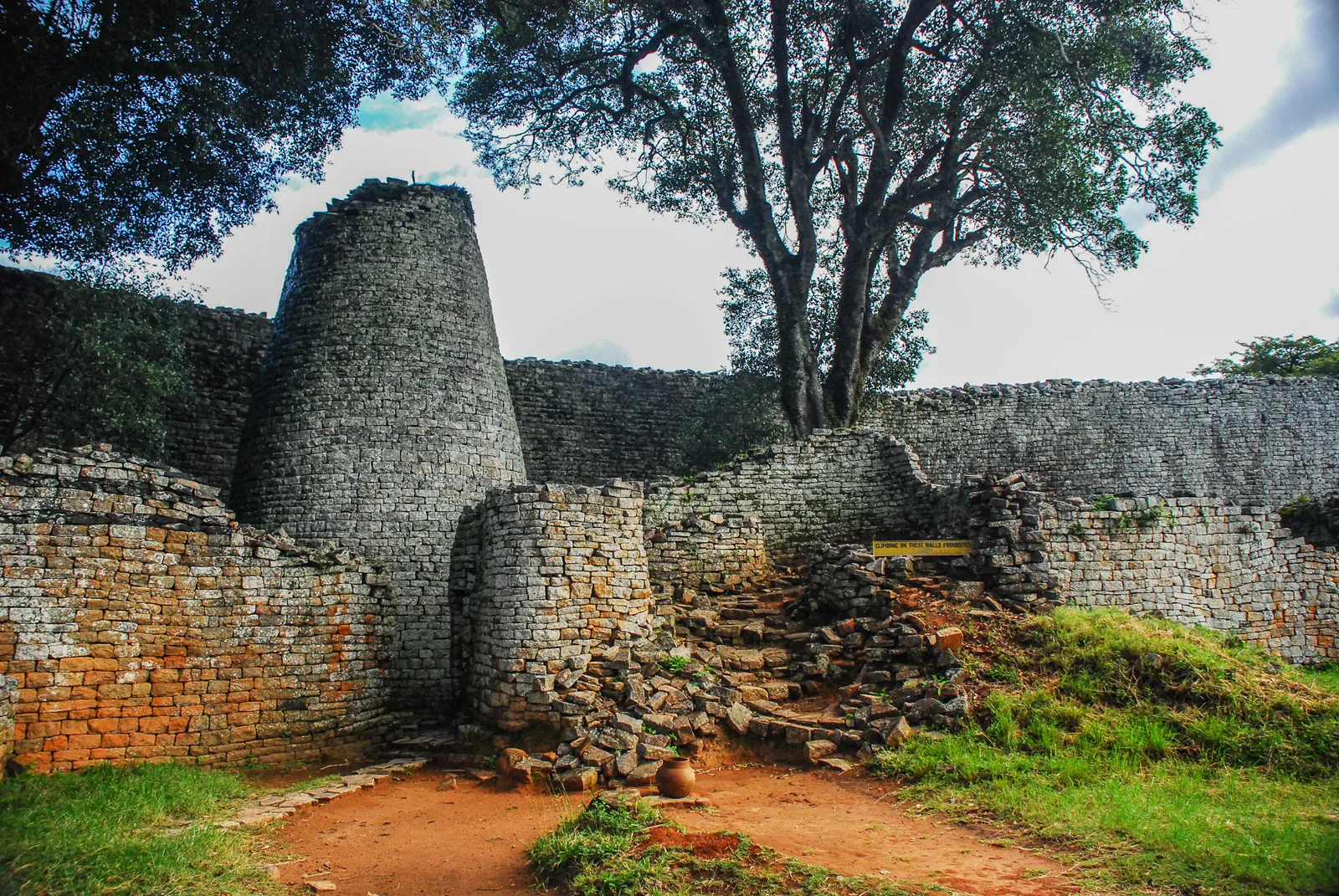
Great Zimbabwe
a prosperous trading center and royal complex; items from as far away as Persia and China have been found. Walls: 800 feet long, 32 feet tall; 17 feet thick at base. Internal and external passageways are tightly bounded, narrow, and long
16
New cards
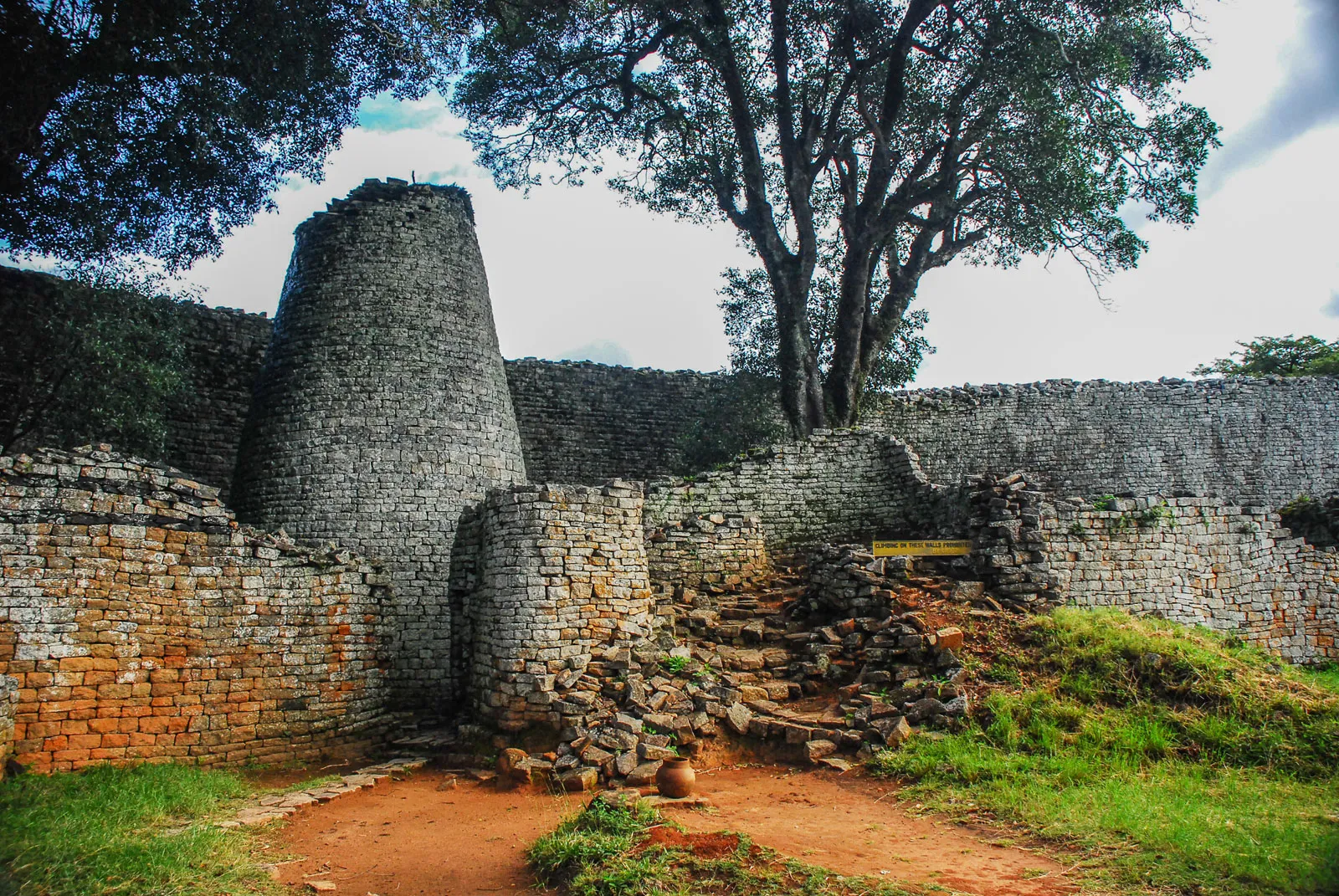
Canonical Tower, Great Zimbabwe
modeled on traditional shapes of grain silos; control over food symbolized wealth, power, and royal largesse. Resembles a granary and represented a good harvest and prosperity; grain gathered, stored, and dispensed as a symbol of royal power.
17
New cards
Zimbabwe
derives from a Shona term meaning “venerated houses” or “houses of stone.”
18
New cards
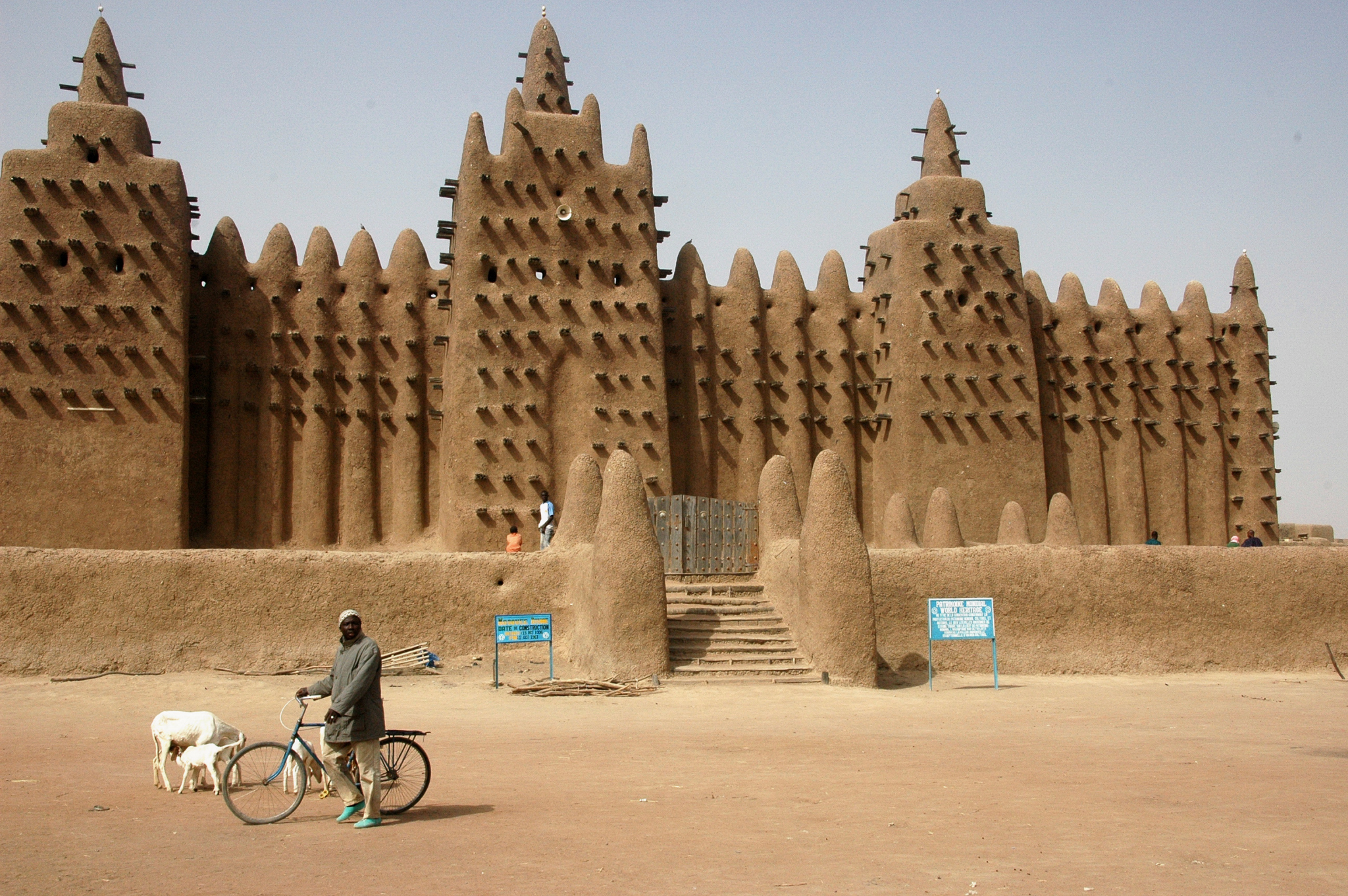
Great Mosque of Djenné
Crowning ornaments have ostrich eggs, symbols of fertility and purity. Roof has several holes with terra cotta lids to circulate air into the main room. Largest mud-brick mosque in the world.
19
New cards
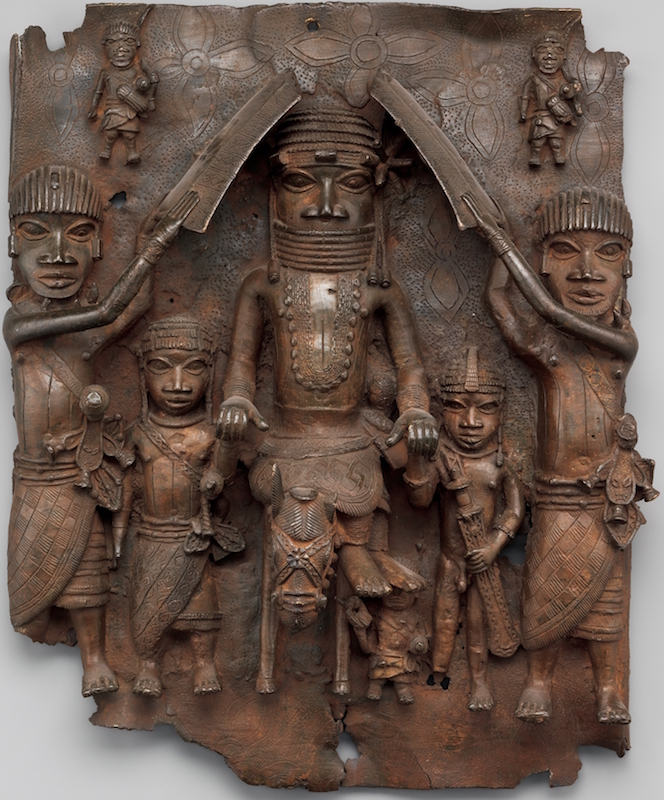
Benin Wall Plaque
One of 900 brass plaques produced, each between 16 and 18 inches. Shows aspects of court life in the Benin culture.It decorated the walls of the royal palace in Benin.
20
New cards
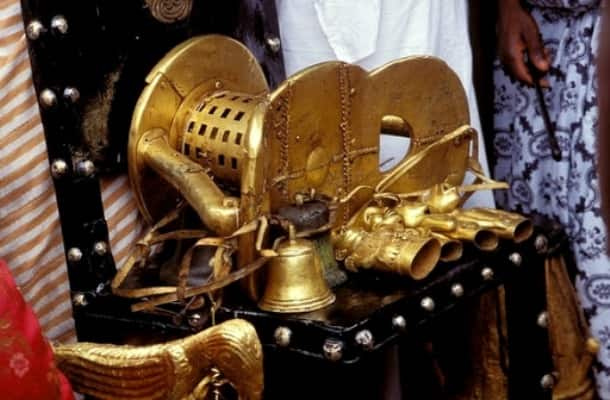
Golden Stool of Ashanti (Sika Dwa Kofi)
According to a tradition, it was brought down from heaven by a priest and fell into the lap of the Ashanti king, Osei Tutu. It became the repository of the spirit of the nation; it is the symbol of the mystical bond among all Ashanti.
21
New cards
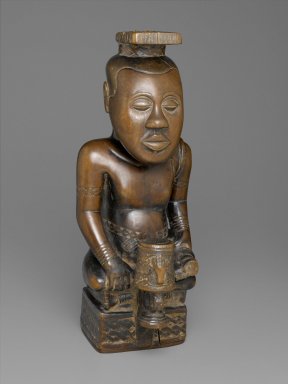
Ndop (portrait figure) of King Mishe miShyaang maMbul
Rubbed with oil to protect it from insects. Acted as a surrogate for the king in his absence. One of the earliest existing African wood sculptures; oldest ndop in existence. King’s charm.
22
New cards
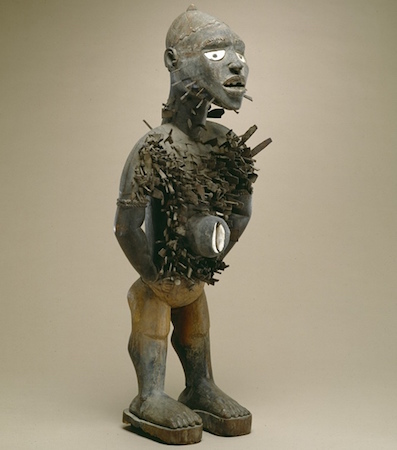
Power figure (Nkisi n’kondi)
Medical properties are inserted into the body cavity, thought to be a person’s life or soul. The figure has a role as a witness and enforcer of community affairs. In order to prod the image into action, nails and blades are often inserted into the work or removed from it.
23
New cards
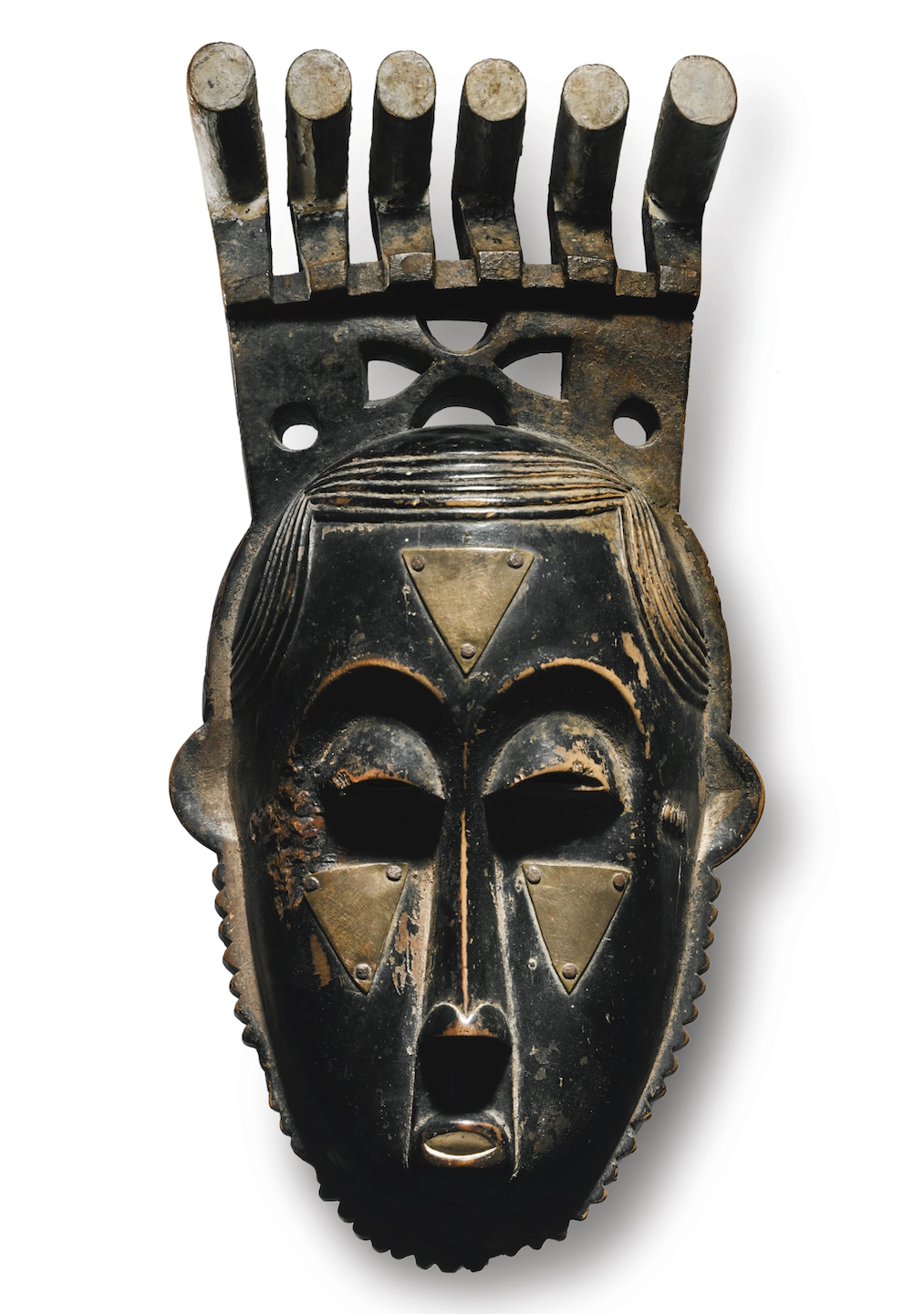
Portrait mask (Mblo) of Moya Yanso
Presented at performances in which an individual is honored with ritual dances. This one was made by the artist Owie Kimou. An idealized representation of a real person.
24
New cards
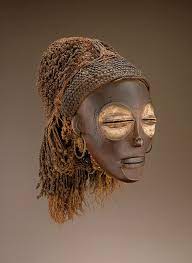
Female (Pwo) mask
Male dancers are covered with their identities masked; they are dressed as women with braided hair. During the ritual, men move like women. Marks around the eyes may suggest tears
25
New cards
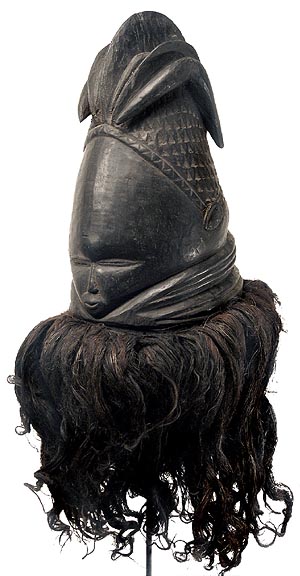
Mende Bundu mask
Idealized female beauty, both physically and morally. Small horizontal features. Used by the elder women of the Sande society; and for initiation rites
26
New cards
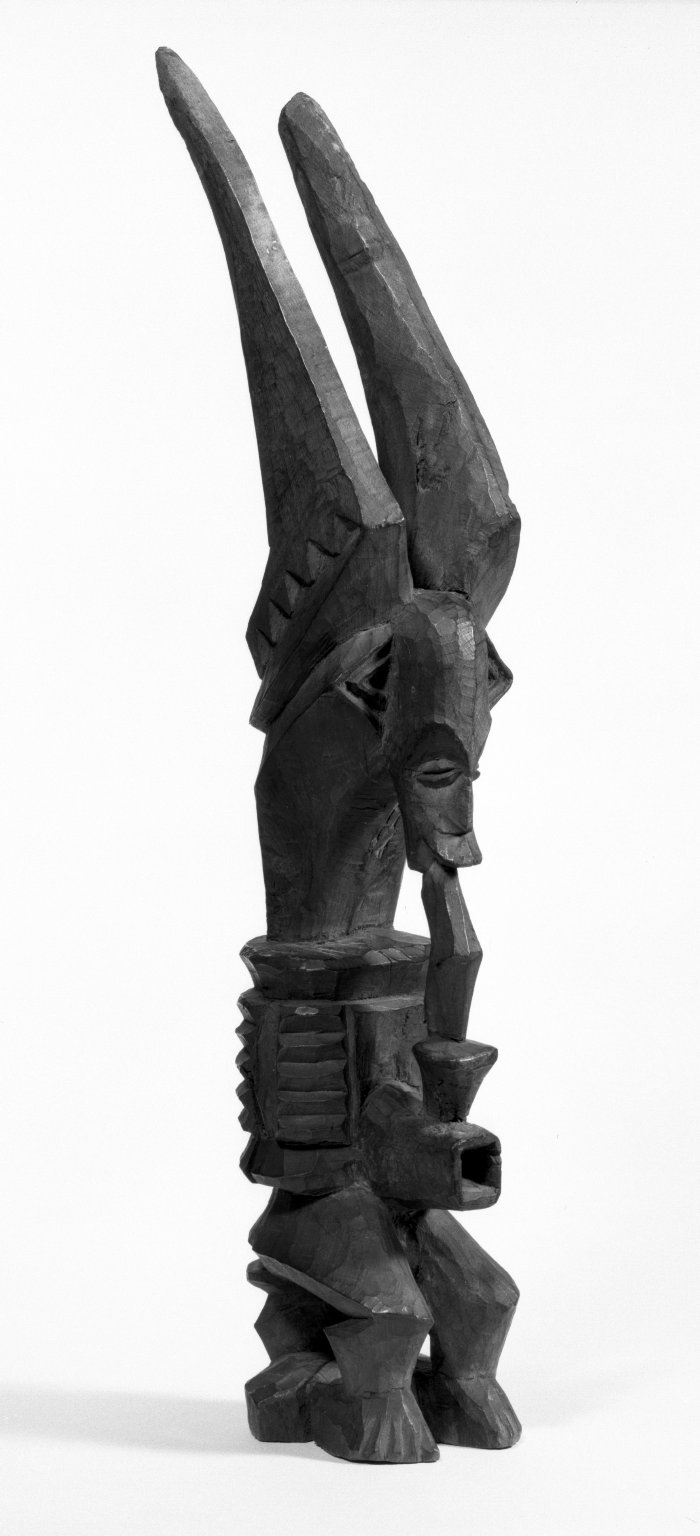
Ikenga (shrine figure)
Carved from hardwoods, considered masculine.embraces traditional masculine associations of strength and potency. It is maintained in the man’s home and is destroyed when the owner dies
27
New cards
Ikenga
This word means “strong right arm” and thus physical prowess.
28
New cards
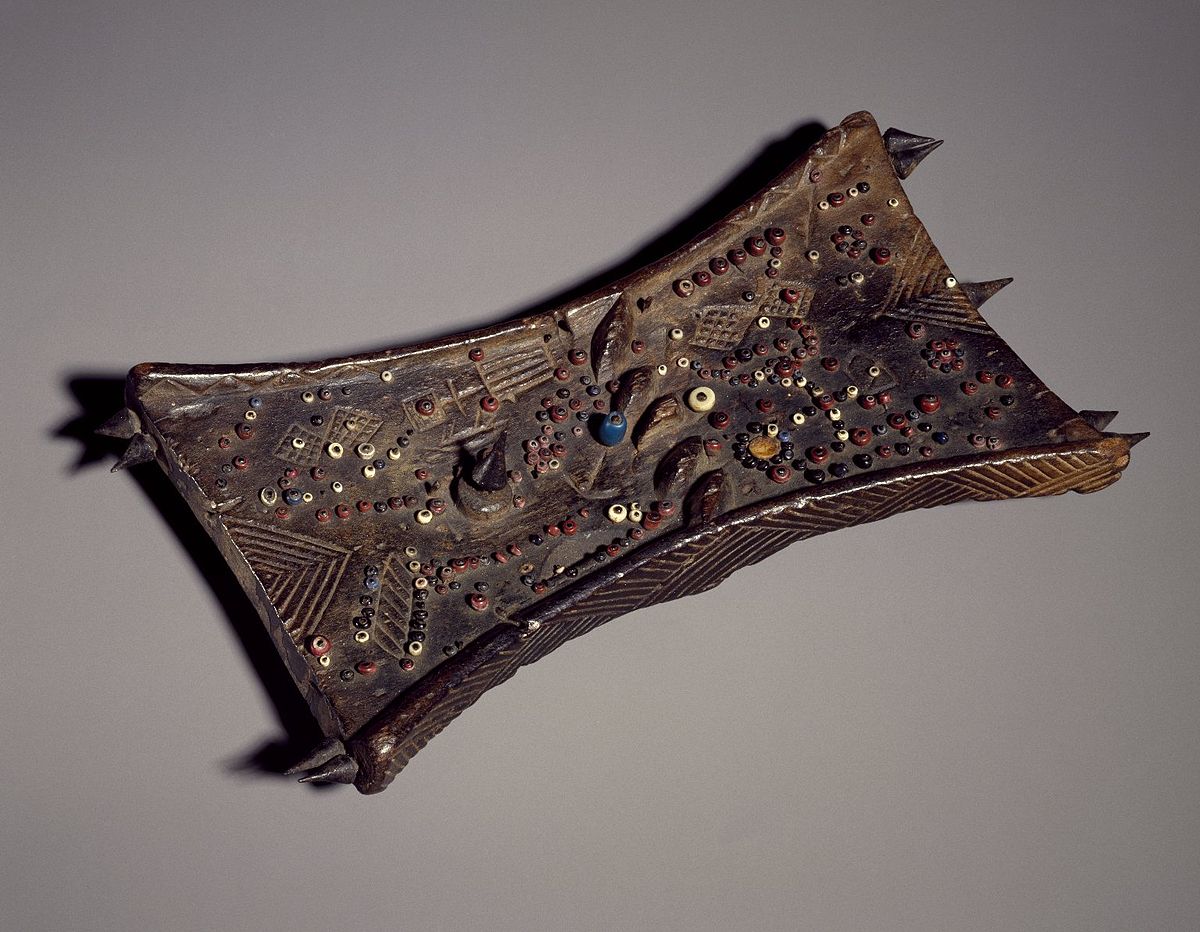
Lukasa (memory board)
Carved from wood in an hourglass shape and adorned with beads, shells, or metal. Court historian who serves as reader of the board holds the lukasa in his left hand and gently touches the beads that he will discuss with his right index finger. These are controlled by the Mbudye
29
New cards
Mbudye
a council of men and women who interpret the political and historical aspects of Luba society.
30
New cards
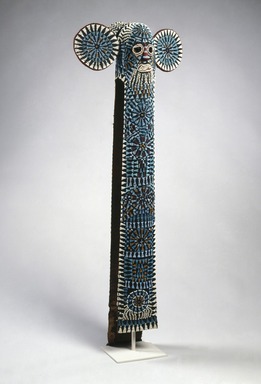
Aka elephant mask
Beadwork on a fabric backing; beadwork is a symbol of power. Has features of an elephant and human face. Performance art: maskers dance barefoot to a drum and gong; they wave spears and horsetails. Only important people in society can own and wear it.
31
New cards
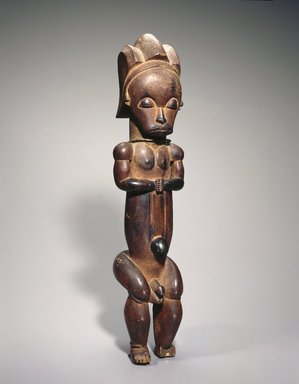
Reliquary figure (byeri)
Such figures were placed on top of cylinder-like containers made of bark that held skulls and other bones of important clan leaders. These figures were made to be portable. Emphasis on the head and the tubular nature of the body.
32
New cards
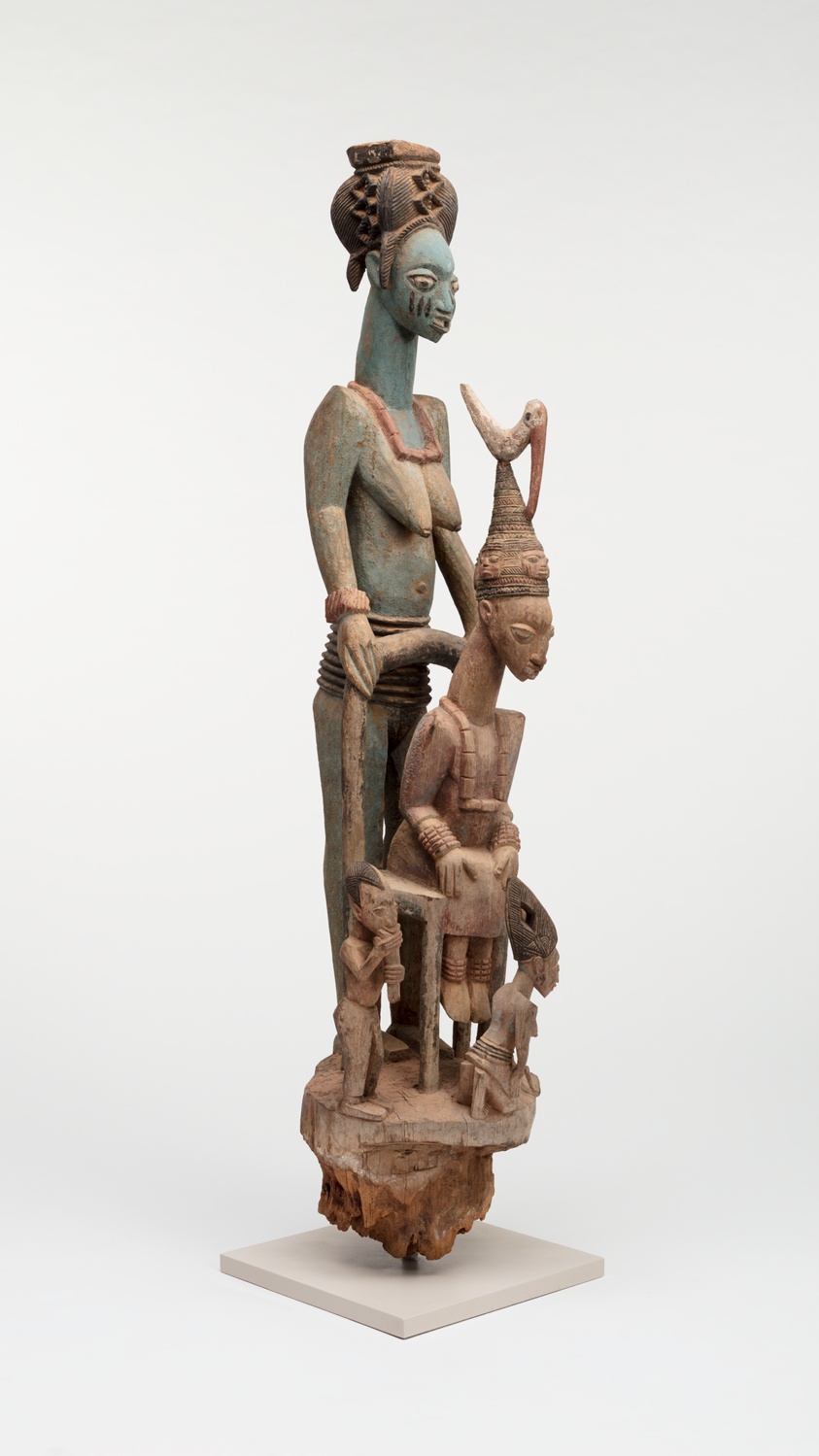
Veranda post of enthroned king and senior wife (Opo Ogoga)
Olowe of Ise carved this for the rulers of the Ekiti-Yoruba kingdom in Nigeria. One of four carved for the palace at Ikere, Nigeria. Wooden sculpture with tall vertical emphasis. Negative space creates an openness in the composition.